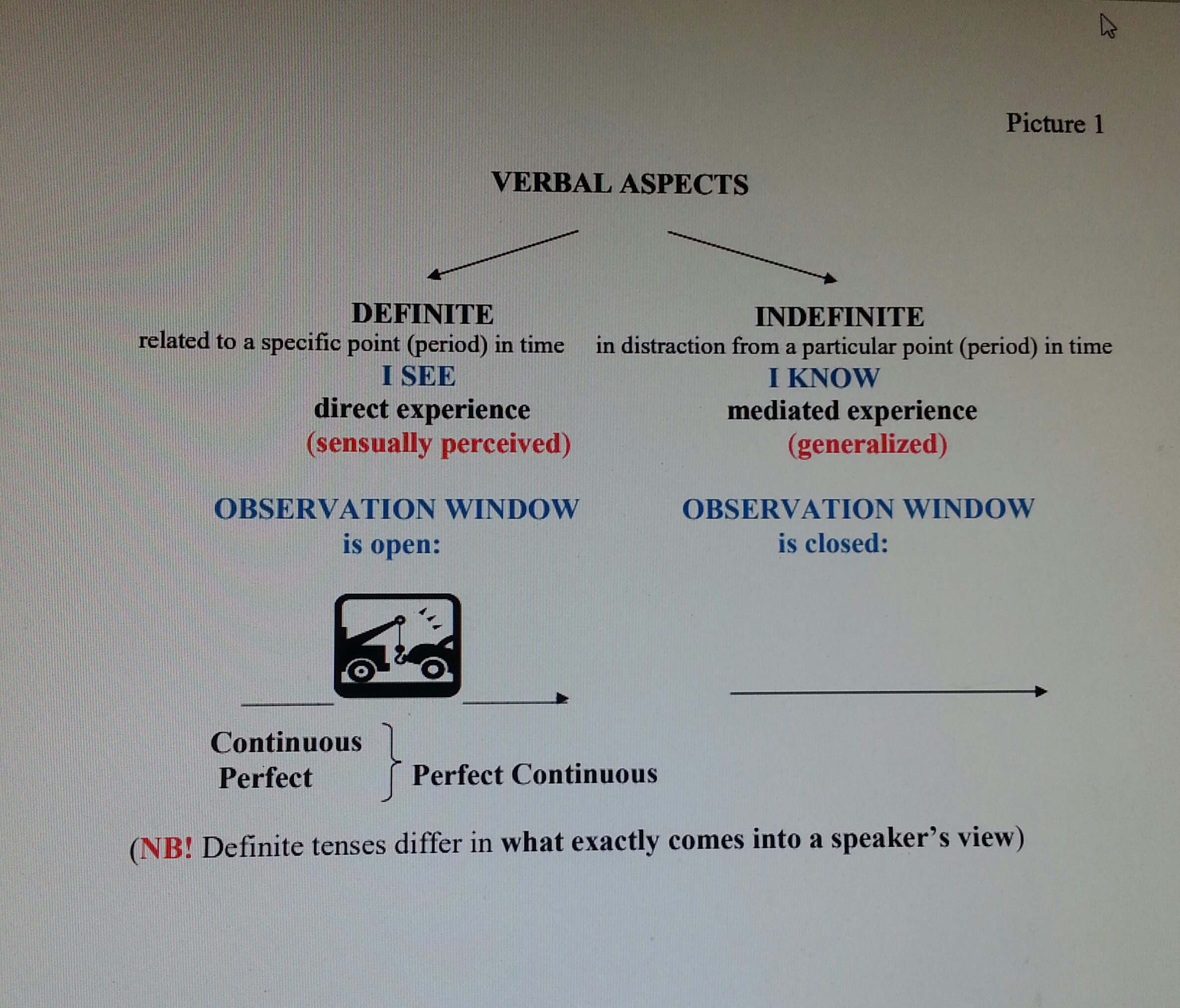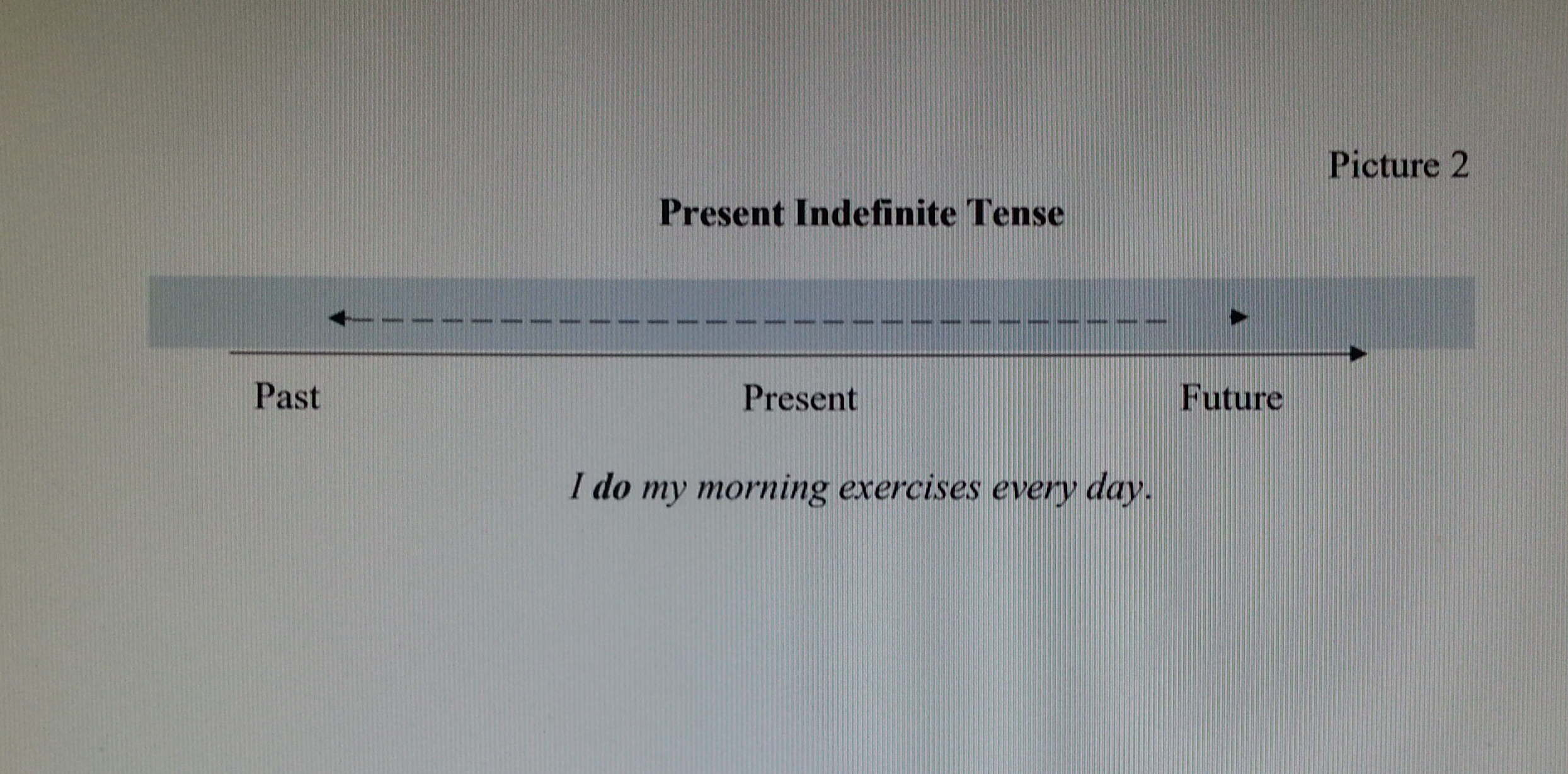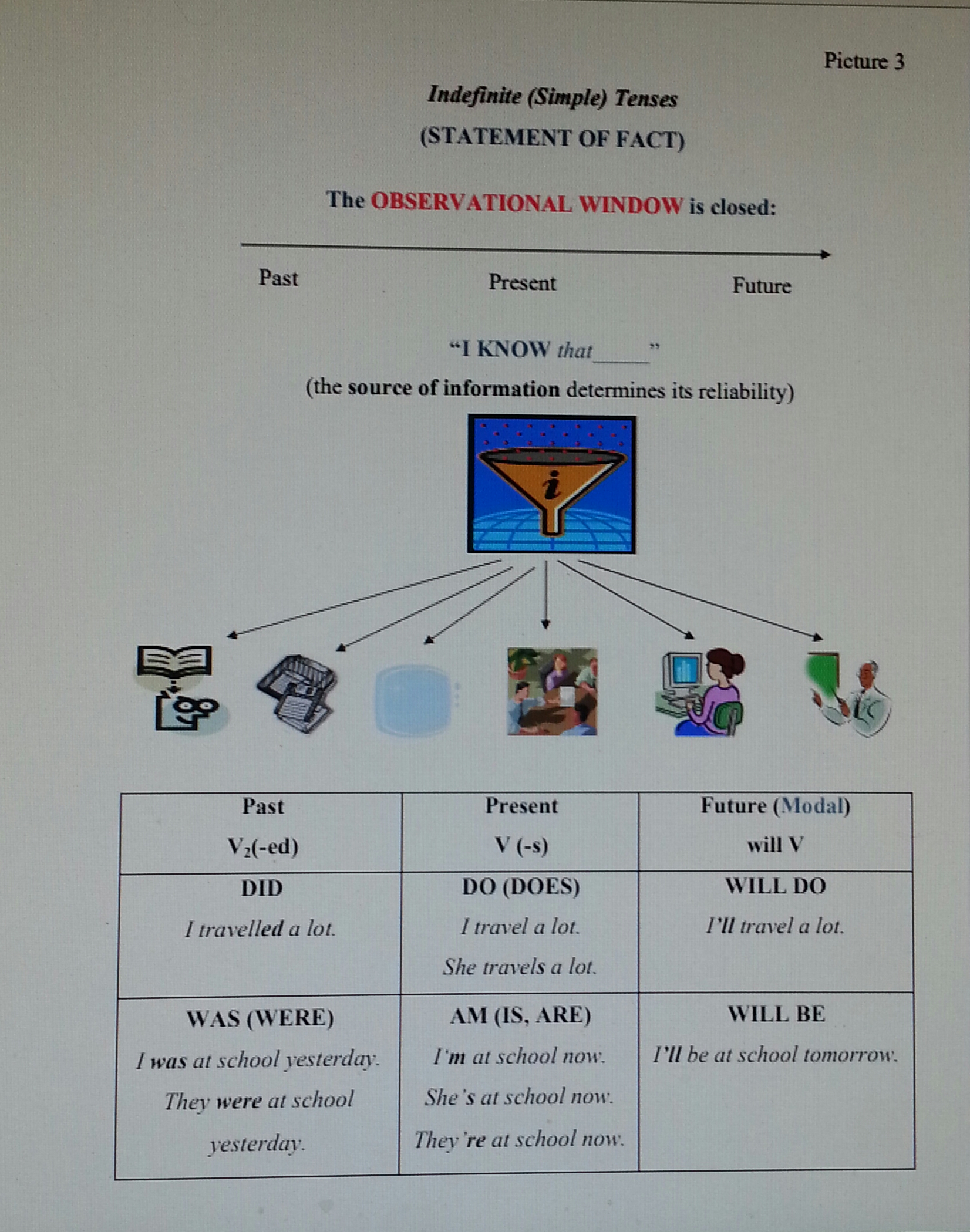КОГНИТИВНАЯ ГРАММАТИКА И ОБУЧЕНИЕ АНГЛИЙСКОМУ ЯЗЫКУ: INDEFINITE TENSES, ИЛИ КОГДА «ОКНО НАБЛЮДЕНИЯ» ЗАКРЫТО
КОГНИТИВНАЯ ГРАММАТИКА И ОБУЧЕНИЕ АНГЛИЙСКОМУ ЯЗЫКУ: INDEFINITE TENSES, ИЛИ КОГДА «ОКНО НАБЛЮДЕНИЯ» ЗАКРЫТО
Аннотация
Цель статьи – раскрыть потенциал когнитивной грамматики для освоения английского языка. Автор показывает, как опора на ключевое понятие «окно наблюдения» и разграничение двух противоположных стратегий человеческого познания – непосредственное («ВИЖУ») и опосредованное («ЗНАЮ») – позволяет повысить эффективность усвоения системы видовременных форм английского глагола. На примере когнитивного анализа времен группы Indefinite доказывается, что залогом успешной иноязычной коммуникации является осознание обучаемыми того смысла, который англоговорящий «держит в голове» в момент порождения речи, когда «окно наблюдения» закрыто. Результаты работы могут быть использованы в практике преподавания и изучения английского языка в средних и высших учебных заведениях, на курсах повышения квалификации.
1. Introduction
Cognitive linguistics is one of the most productive approaches, which delves into the essence of a linguistic sign as a carrier of knowledge about the world. It gives an answer to the question of how a person comprehends objects and phenomena of the surrounding world. The cognitive approach to language as a system of knowledge representation helps to identify the “pre-verbalized” level of human consciousness, where the realm of the unconscious dominates, and to reveal its work [9]. The cognitive orientation of modern linguistic research could not but affect the general conceptual position of the methodology as a science and the technology of teaching foreign languages [1], [2], [6], [10].
It is a widely held belief that one of the difficulties of learning English is associated with a large number of verbal forms. Traditional formulations – both in Russian and foreign textbooks – do not contribute to understanding the essence of the system of the English verb and, consequently, its assimilation. In addition, the presentation of aspectual meanings in the vast majority of grammar manuals is based on the list of cases of typical use (for instance, see [12]). It is possible to remember such branching lists, but it is much more difficult to produce speech utterances on this basis. Unfortunately, working only with authentic textbooks, which are now increasingly preferred in the higher education system, does not contribute to the assimilation of a foreign language system, despite the fact that foreign teaching materials have some undoubted advantages (see in more detail [5], [7]). Understanding what is behind a particular grammatical construction can help avoid errors associated with interference of the native language, since the language consciousness of speakers is “reprogrammed” at the initial stage. Let us show how the appeal to the cognitive nature of grammatical differences and the disclosure of the meaning of terms help overcome many essential difficulties in assimilation of aspectual-temporal verbal forms in English, which differ significantly (cf. [11]) from those in Russian.
2. Research methods and principles
The results of functional-semantic and cognitive-contextual analysis along with introspection have been used in the course of the study.
3. Main results
Let us describe how the teacher can begin the explanation of this grammar topic. To get the students’ attention, they can ask them the provocative question, “How many tenses of the English verb do you know?” The good students usually answer, “Twelve tenses”. When the teacher says that in English (the same in Russian), in fact, there are only three tenses (past, present and future), the students feel confused. This unexpected turn is to capture their mind and increase the efficiency of comprehension of the material. After that the teacher clarifies that each tense can be represented in different aspects. Here we are far from the only case when paying attention to a linguistic term helps students to penetrate into the essence of the grammatical phenomenon (for instance, see [4]). The linguistic term “aspect” came from the Latin noun: aspectus – “view, field of vision” ← from the Latin verb specto – “I am looking”). It is the concept of "FIELD OF VISION" that should become the starting point for students to choose a correct verbal aspect.
Thus, the teacher faces the main task – to help students realize how an English speaker looks at the world (as opposed to a Russian-speaking one): what they highlight in what is happening, what they focus on, what gets and what does not get into their field of vision. The teacher informs students that there are three “pure” verbal aspects (“views”), which are known as indefinite (simple), continuous (progressive), perfect, and one “compound” aspect – perfect continuous.
The term “simple” came from the American grammatical tradition and indicates only the formal principle of classification, without clarifying the meaning of this verbal form. The British term “indefinite” should be recognized as more successful than the American one, although for some reason both of them do not give the expected opposite option: simple – complex (?), indefinite –- definite (?). However, the dichotomy itself is of fundamental importance for understanding the meaning: indefinite tenses (not related to a moment) – definite tenses (related to a moment and the speaker’s sense perception).
In fact, this difference boils down to a more general distinction (see also [11]), which is consistently reflected in English grammar: 1) what I KNOW; 2) what I SEE (hear, etc.), as if “looking into” a moment (in the past, present or future) through the OBSERVATIONAL WINDOW. In the system of the English language, the observer's position is generally important. This is connected, as is known, with the differences in the meanings of the verbs come (“go towards the observer, approach him) and go (“move away from the observer”), definite and indefinite articles, etc.
Now you can offer students a generalized look at the system of the English verb from a cognitive point of view (see Picture 1 and [3, P. 222]).

Figure 1 - Verbal aspects ("OBSERVATIONAL WINDOW'")
Since interpreting a sentence means correlating an adequate non–linguistic situation, it is advisable to drill students to distinguish the aspectual meaning in speech situations in Russian (it is useful to recall the successful methodology by T. B. Klementyeva [8]). It is the native language which acts as the necessary base for the formation of language consciousness. The indefinite aspect (“I KNOW”) are better assimilated in contrast to the continuous aspect (“I SEE”), however, due to certain limitations, we are forced to divide pieces of information into different articles.
Let us consider the cognitive essence of indefinite aspect, since 80% of the time we choose a tense in either spoken and written English, it is the present or past indefinite. The speaker, using the indefinite aspect, reports that the action occurred (I read an interesting book yesterday), occurs (I watch TV every evening), or will occur (I will come back at 11 o'clock), i.e. only states the fact of the commission of the action regardless of the nature of its course, its completeness and any moment in time. That is why we can translate non-present indefinite forms with both perfect and imperfect Russian verbs. It is worth drawing the students’ attention to one “exception”, which just “confirms the main rule” (exceptio regulum probat, as the ancient Romans said). Adjectives indicate a permanent feature of the subject (He's really aggressive), unlike progressive (present) participles, which indicate the current feature of the subject, a momentary manifestation of behavior which is not peculiar to a person (He's being so aggressive).
We reveal the specifics of indefinite aspect using the example of the present tense, and then, based on this knowledge, students can study other indefinite tenses.
So, the facts lack a time dimension: we cannot show the point in time (the period) on the time axis (see Picture 2).

Figure 2 - Present Indefinite Tense: "OBSERVATIONAL WINDOW" is closed (time axis)
The fact is epistemological, it is the construct of thought, it is impossible to convey it without words, it is impossible to see it, imagine it as a picture (NB! as an experiment, students can try to cope with such a task). A fact is a proposition that is differentiated by the criterion of truth (=it is TRUE) and perceived by consciousness (I KNOW that) they have a big lunch twice a week (=it is a fact).
So, the observational window is closed, but we are not “looking” anywhere – we are just “gutting” the baggage of knowledge that we keep in mind: The Sun doesn't go round the Earth. His mother is an engineer. There is no flow of time here – that is why the use of indefinite aspect is characteristic of stative verbs, among which the most ancient existential verb to be occupies a central place. There must be a reason that (NB! students should realize this) only this verb retains the original conjugation in the main indefinite tenses: the present indefinite and the past indefinite (will is supposed to denote modality). As for the action verbs, used in the indefinite aspect, they cease to denote the actions (it is important to emphasize this), and are used to characterize the subject itself, highlighting its essential properties and features (according to generalizing function of human thinking): Some trees don’t lose their leaves in winter. The speaker can share information about objective relationships (This book consists of two parts), about permanent people’s qualities (She's quite shy), abilities (She sings and dances very well), habits (I usually do my housework on Saturdays), mental states (I know, he hates, she's in love), etc. (see in more detail [3, P. 35]). This indirect knowledge, by the way, is not always necessarily reliable. The actions themselves are thought very vaguely, in distraction from the nature of their course: that is why, the slightest hint at the nature of the course of the action (its duration, transience), variability of the situation prevents speakers from usage the indefinite aspect (more on this in our next article). On the contrary, this leads to the use of simple aspect for permanent situations: I work for the Euro Ballet Company in Paris (But this summer I am working in London).
The cognitive approach makes it possible to introduce even logically difficult-to-explain cases of use at an early stage.
1) The train leaves at 9.30 tomorrow. Why is the future action (as evidenced by the adverb related to future) with the verbs of movement (leave, start, arrive, return, go, come) usually transmitted by the present indefinite? Because the fact is KNOWN to the speaker from the timetable, the train schedule, and for the present (the moment of speech) this fact is TRUE. There is also no need to memorize a numerous class of verbs, which are usually not used in the continuous aspect (stative verbs), if we realize that they denote internal qualities (states of mind or abilities) which we cannot observe directly, but which we KNOW about).
2) Here comes the postman. There goes the last bus. Why can we use the present simple to draw attention to someone arriving or leaving, with here comes, there goes? These are always present simple and appear before the subject, since the speaker doesn’t intend to describe what the agents are doing. His aim is to report about the event (it is similar to the author's remarks in the play, as well as retelling the plot of books and films).
3) France kicks off, Viera passes to Henry, Henry cuts inside … and it’s goal! We use the present indefinite to express the immediacy of an event, e.g. in sports commentaries, when the action is over before the description finishes (=CAN’T SEE it anymore). On the contrary, when the action is in progress throughout the time of speaking (=CAN still SEE it), we use the present continuous in sport commentaries: They’re now entering the back straight and Bekele is starting to pull away from the other runners … he crosses the line two seconds ahead of his closest rival …
If students have R. Murphy’s popular grammar tutorial, it is useful to draw their attention to Exercise 2.4. in Unit 2 Present Simple (I do):
You know that Lisa reads a newspaper every day. You want to know which one. Ask her. ____________________________________________?
I don’t know where Lisa’s grandparents live. You want to know.
Ask Lisa. ____________________________________________? [12, P. 5]
In this task, the initial situation “I KNOW (don't know) something” is introduced and then the speaker’s communicative strategy is formulated: “I want to KNOW even more”.
As we know, information entered in different ways is more likely to be assimilated by a group in which there are usually students of various psychological types. That is why, at the end of the studying indefinite aspect, it is desirable to give a visual and compact representation of the material being studied. Picture 3 here and in [3, P. 223]) indicates that speakers use the indefinite aspect if they keep in mind: “I report what I KNOW (about the past, present or future), i.e. the statement is TRUE for the moment of speech”.

Figure 3 - Indefinite (Simple) Aspect (visual aid)
4. Conclusion
To conclude, the process of mastering a non-native language begins with the learner’s attempt to understand how language structures “work” in the minds of native speakers or, conversely, what “generates” a particular grammatical structure in their minds. It is vital for the language learner to observe actual language usage. The teacher helps students extract information about deep mental content from a certain set of linguistic facts simply by “looking into” their own consciousness (using introspection, as linguists say). This method facilitates grammar acquisitions and helps students express their thoughts and opinions in accordance with the spirit of the language being studied – mental grammar.
